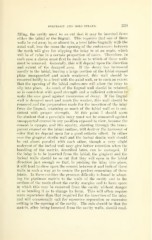Page 681 - My FlipBook
P. 681
PORCELAIN AND GOLD INLAYS. 339
filling, the cavity must be so cut that it may be inserted from
either the labial or the lingual. This recjuires that one of these
walls be cut away to, or almost to, a level labio-liugually with the
axial wall, less the room the opening of the embrasures between
the teeth will give for slipping the inlay in at an angle, which
will be of value in a certain proportion of eases. Therefore, in
each case a choice must first be made as to which of these walls
must be removed. Generally, this will depend upon the direction
and extent of the decayed area. If the decay has burrowed
mostly to the labial, leaving a large portion of the labial enamel
plate unsupported and much weakened, this wall should be
removed boldly to a level with the axial wall, or to such an extent
that the opening of the labial embrasure will allow the inlay to
slip into place. As much of the lingual wall should be retained
as is consistent with good strength and a sufficient extension to
make the case good against recurrence of decay. If the lingual
wall is decayed most and much the weaker, this wall should be
removed and the preparation made for the insertion of the inlay
from the lingual, retaining as much of the labial wall as is con-
sistent with proper strength. At this point I should warn
the student that a porcelain inlay must not be cemented against
unsupported enamel in any position exposed to view, because the
cement is opaque, and this opacity, showing through the trans-
parent enamel on the labial surface, will destroy the harmonj^ of
color that we depend upon for a good esthetic effect. In either
case the gingival dentin wall and the incisal dentin wall should
be cut about parallel with each other, though a very slight
undercut of the incisal wall may give better retention when the
handling of the matrix, described later, can l)e managed. If
the inlay is to be inserted from the labial, the gingival and the
incisal walls should be so cut that they will open in the labial
direction just enough so that, in pushing the inlay into place,
it will tend to close upon the cement between it and both of these
walls in such a way as to secure the perfect cementing of these
joints. In these cavities the greatest difficulty is found in adapt-
ing the platinum matrix to the walls of the cavity and to the
surface of the tooth about the cavity margins and to have space
in which this may be removed from the cavity without danger
of so bending it as to change its form. This will often require
more separation than that required for the insertion of the inlay
and will occasionally call for excessive separation or excessive
cutting in the opening of the cavity. The rule should be that the
matrix, after being loosened from the cavity walls, should read-


